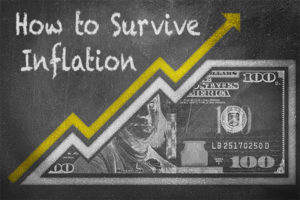Taxpayers Beware: Alternative Minimum Tax Could Mean Huge Hit
If you’re a taxpayer worried about Congress not extending the Bush tax cuts by Jan. 1, brace yourself: An even bigger hit – the Alternative Minimum Tax – might be waiting for you on New Year’s Day.
About 28 million middle-class Americans could be subject to the Alternative Minimum Tax (AMT) for the first time, and their share of the bill is estimated at a whopping $3,700 per family.
They won’t have to pay that much if Congress puts a “patch” on the bill by Dec. 31, but that move is tied into the fiscal cliff crisis, and there are few positive signs on that at the moment.
The patch is something Congress usually does on an annual basis and would keep the exempt levels for paying the AMT at $74,450 for married couples and $48,450 for single taxpayers. Only 4 million taxpayers were subject to the AMT at those levels last year. That number would grow to 32 million if nothing is done by Dec. 31, but the bill that could provide relief has stalled in the Senate.
According to Democratic Majority Leader Harry Reid, it won’t get moving until Republicans agree to raise tax rates for the top 2 percent of wage earners.
“As long as they (Republicans) do something on rates, I am happy to talk to them about anything,” Reid said in an interview with Bloomberg Businessweek. Pressed on whether he would refuse to move a smaller-scale bill if Republicans won’t budge on rates, Reid said, “That’s right.”
Deadline Can’t Be Moved
Making matters worse for the 28 million taxpayers affected, Dec. 31 is a hard deadline. The current provision actually expired Jan. 1 of this year, meaning Congress had until Dec. 31 to rewrite it, or it becomes part of the permanent 2012 tax code.
If no changes are made, the exempt levels plunge to $45,000 for married couples and $33,750 for single taxpayers, pulling 28 million more taxpayers in with them.
The Bush tax cuts, by contrast, expire on Jan. 1, 2013, meaning Congress has until Dec. 31, 2013, to amend them.
The IRS may be the most nervous bystanders in the whole situation. Acting IRS Commissioner Steven Miller sent a letter to leaders in Congress on Nov. 13 warning them the lack of action would cause substantial disruption in his department. Miller said that 60 million taxpayers – almost half of all individual tax filers – could be affected by changes, either way, in the AMT.
Miller’s letter went on to say that he would follow previous practices and instruct his staff to leave its core systems “as is,” meaning with AMT taxes computed at the $74,450 (married) and $48,450 (single) rates.
If no change is enacted and the provisions roll back to $45,000 (married) and $33,750 (single) , the IRS would need time to make necessary changes to its computer systems. Miller predicted this would cause a delay in the opening of filing season and delay refunds to taxpayers.
“Essentially, IRS has said it will be chaos — chaos! — trying to make it work,” Rep. Sander Levin of Michigan, the ranking Democrat on the tax-writing House Ways and Means Committee, told The Associated Press.
Once Known As ‘Rich Man’ Tax
The AMT originally was enacted in 1969 to ensure that high-income earners, who used a lot of tax shelters and deductions, would have to pay at least some taxes. Because the income levels affected haven’t been adjusted for inflation since 1987, many members of the middle class now fall into the income levels that were considered wealthy in 1987.
Taxpayers are told to calculate their taxes under the regular system and the AMT and pay whichever amount is higher. The IRS provides a calculator, called the “Alternative Minimum Tax Assistant to Individuals” to assist people in determining if they belong in the AMT bracket.
What makes the AMT system so punishing is that fewer deductions are allowed. Thus, even though the highest AMT rate is 28 percent compared with 35 percent for regular tax, most people will end up paying more in the AMT rate.
For example, in 2010, taxpayers with adjusted gross incomes between $200,000 and $500,000 paid an extra $6,150. Congress typically helped people get around this by administering what are referred to as “patches” every year or two to temporarily raise the exempt levels.
Sources:
- Pender, K. (2012, December 1). Alternative minimum tax may get new patch. San Francisco Chronicle. Retrieved from http://www.sfgate.com/business/networth/article/Alternative-minimum-tax-may-get-new-patch-4083552.php
- Kasprak, N. (2012, December 14). Alternative Minimum Tax Increase Looming Over Fiscal Cliff Negotiations. Tax Foundation. Retrieved from http://taxfoundation.org/blog/alternative-minimum-tax-increase-looming-over-fiscal-cliff-negotiations
- Hunter, K. (2012, December 13). Senate Won’t Consider Stand-Alone AMT Fix, Reid Says. Bloomberg Businessweek. Retrieved from http://www.businessweek.com/news/2012-12-13/senate-won-t-consider-stand-alone-amt-fix-reid-says
- Ohlemacher, S. (2012, December 17). Millions face higher taxes real soon without fix. U.S. News and World Report. Retrieved from http://www.usnews.com/news/politics/articles/2012/12/17/millions-face-higher-taxes-real-soon-without-fix-2?s_cid=related-links:TOP&page=2


















